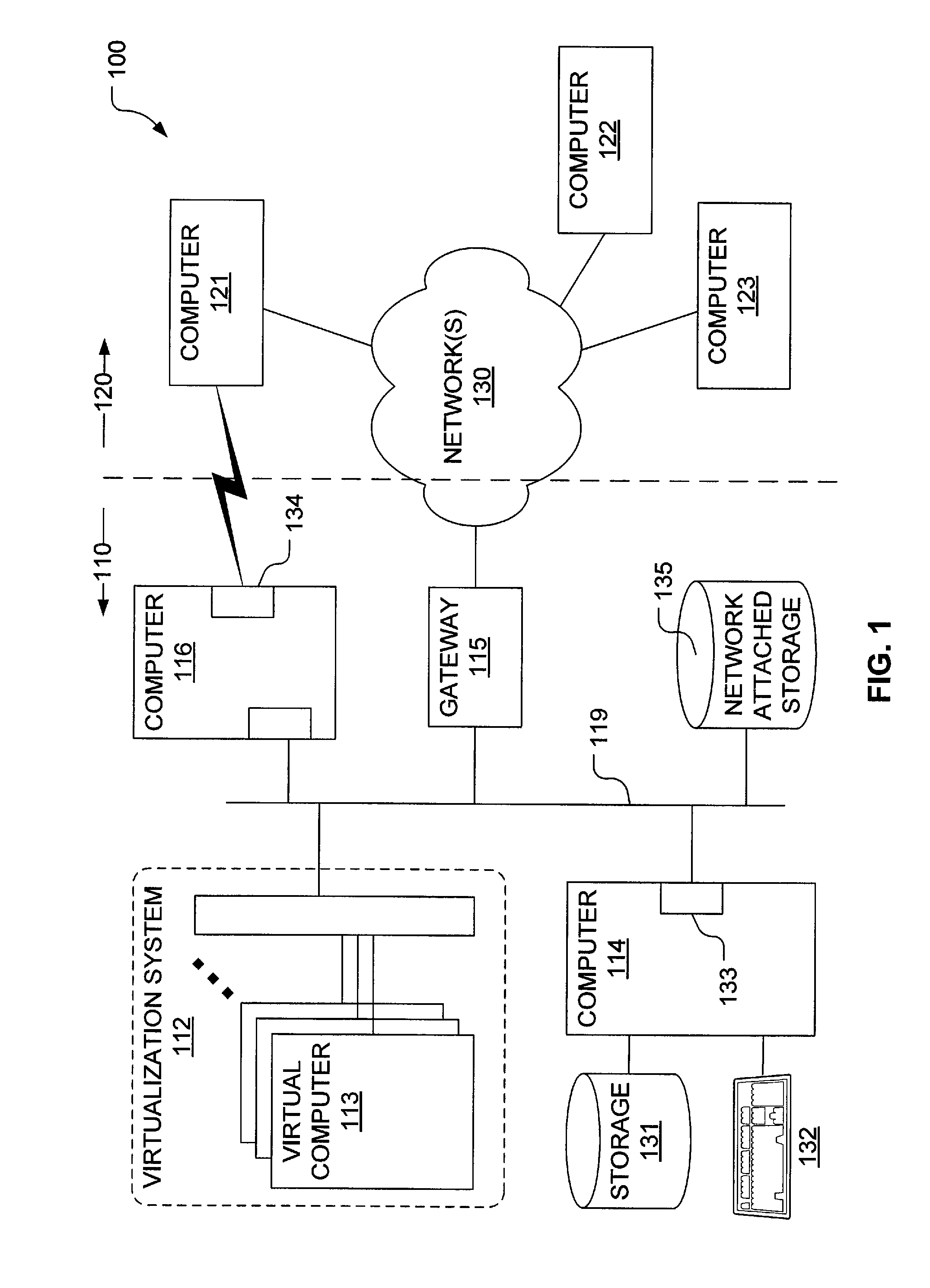Computational system including mechanisms for tracking propagation of information with aging
a technology of computation system and propagation mechanism, applied in the field of computation system, can solve the problems of widespread recognition of the vulnerability of computer system, software and information coding and protocols to unauthorized access or use, poor programming practices and/or bugs, etc., and achieve the effect of limiting overheads associated with such tracking
- Summary
- Abstract
- Description
- Claims
- Application Information
AI Technical Summary
Benefits of technology
Problems solved by technology
Method used
Image
Examples
Embodiment Construction
)
[0026]Mechanisms have been developed for configuring an intrusion detection system or other computer security mechanism to facilitate identification of possible exploitations of data introduced from untrusted sources. In particular, techniques have been developed for propagating a taint status for storage locations in correspondence with information flows of instructions executed by a computing system. In general, the method(s) by which we discover an attack can differ significantly from most conventional intrusion detection methods, which typically scan for signatures or require examination of source or binary code prior to execution. Instead, we identify input data from untrusted sources and take specific steps to track its propagation through storage to a point at which a restricted use of the data (or of derived data) may be consistent with an exploit attempt.
[0027]For example, in a secure (or security conscious) computational system, we would not ordinarily expect that the tar...
PUM
 Login to View More
Login to View More Abstract
Description
Claims
Application Information
 Login to View More
Login to View More - R&D
- Intellectual Property
- Life Sciences
- Materials
- Tech Scout
- Unparalleled Data Quality
- Higher Quality Content
- 60% Fewer Hallucinations
Browse by: Latest US Patents, China's latest patents, Technical Efficacy Thesaurus, Application Domain, Technology Topic, Popular Technical Reports.
© 2025 PatSnap. All rights reserved.Legal|Privacy policy|Modern Slavery Act Transparency Statement|Sitemap|About US| Contact US: help@patsnap.com



